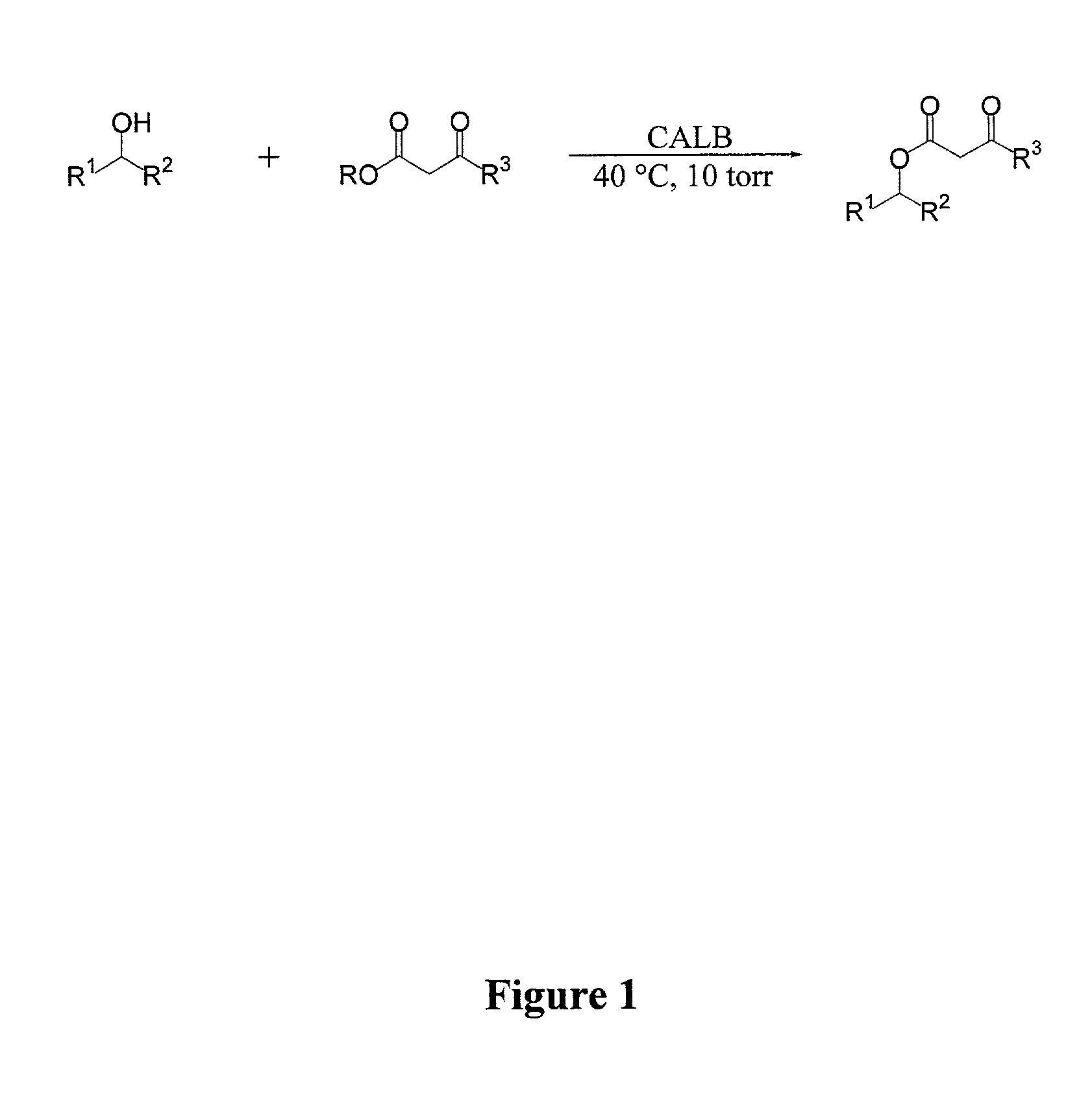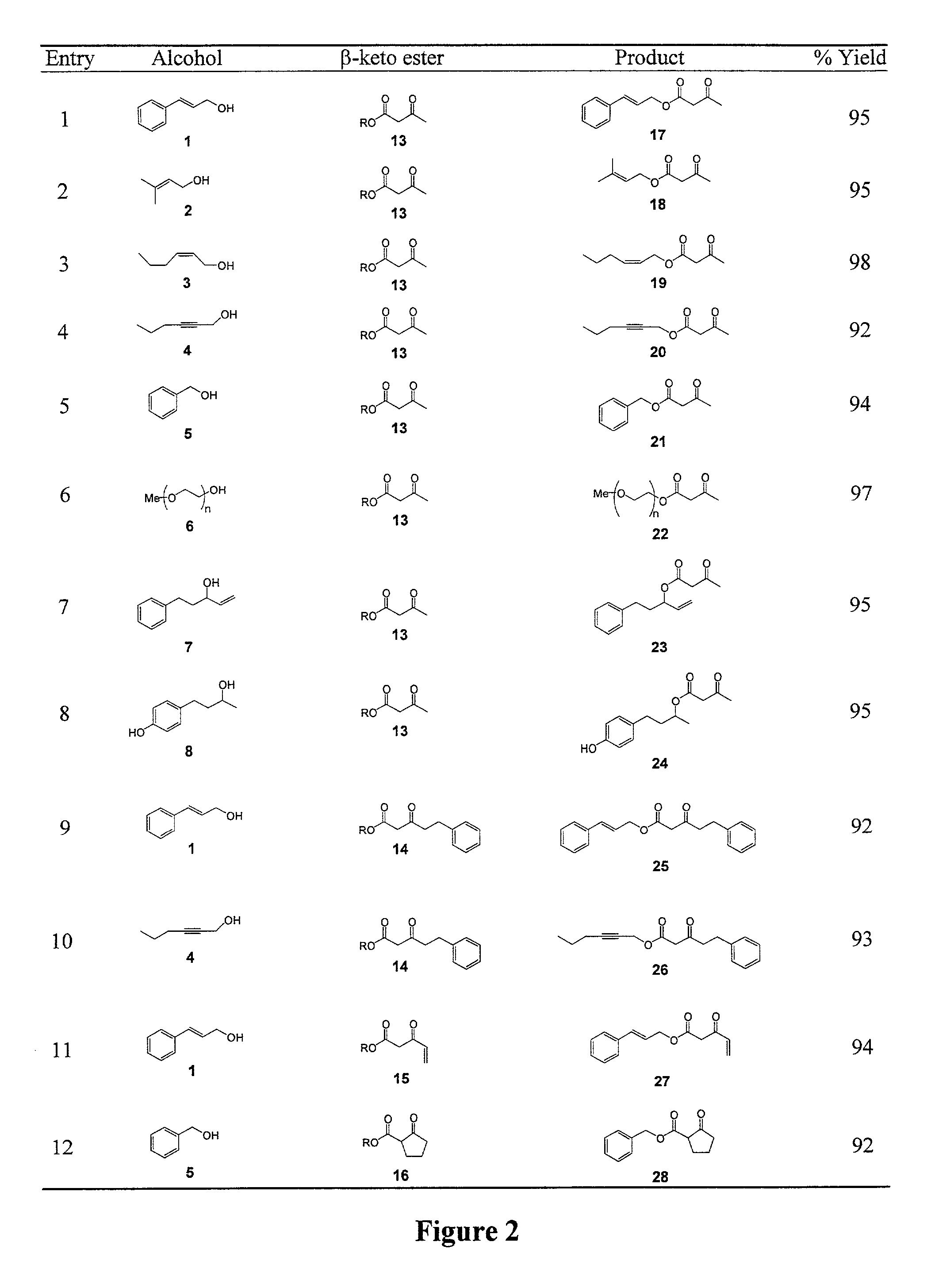Synthesis of B-keto esters
a technology of b-keto esters and synthesis methods, applied in the direction of fertilization, etc., can solve the problems of long reaction time, variable yield, and none of these or any conventional method display stereoselectivity or chemoselectivity between aliphatic alcohols or phenols, and achieve good e values
- Summary
- Abstract
- Description
- Claims
- Application Information
AI Technical Summary
Benefits of technology
Problems solved by technology
Method used
Image
Examples
Embodiment Construction
[0013] General Methods: Methyl and ethyl acetoacetate were obtained from Aldrich Chemical Co. and distilled prior to use. .beta.-ketoester 22 and Nazarov's reagent 24 were synthesized according to literature procedures (I. N. Nazarov, et al., Zh. Obshch. Khim. 1953, 23, 1703.; Engl. Transl. 1953, 23, 1793; L. Weiler, J. Am. Chem. Soc. 1970, 92, 6707). Chiral HPLC analyses were carried out using a Daicel Chiralcel OD Column (250 mm, 4.6 mm, eluent: hexane / 2-Propanol). Column chromatography purification was done using Merck 60 silica gel (particle size 0.04-0.063 mm). The lipase (component B) Novozym 435 derived from Candida antarctica is is a product of Novo Nordisk A / S Denmark. The enzyme used was an immobilized preparation on a macroporous poly(propylene) resin, containing 1% (w / w) enzyme, with a catalytic activity of approximately 25 000 LU / g preparation. CALB was dried in a desiccator over P.sub.2O.sub.5 prior to use. All glassware was oven dried prior to use.
[0014] Lipase-Cataly...
PUM
| Property | Measurement | Unit |
|---|---|---|
| w/w | aaaaa | aaaaa |
| catalytic concentration | aaaaa | aaaaa |
| β | aaaaa | aaaaa |
Abstract
Description
Claims
Application Information
 Login to View More
Login to View More - R&D
- Intellectual Property
- Life Sciences
- Materials
- Tech Scout
- Unparalleled Data Quality
- Higher Quality Content
- 60% Fewer Hallucinations
Browse by: Latest US Patents, China's latest patents, Technical Efficacy Thesaurus, Application Domain, Technology Topic, Popular Technical Reports.
© 2025 PatSnap. All rights reserved.Legal|Privacy policy|Modern Slavery Act Transparency Statement|Sitemap|About US| Contact US: help@patsnap.com



